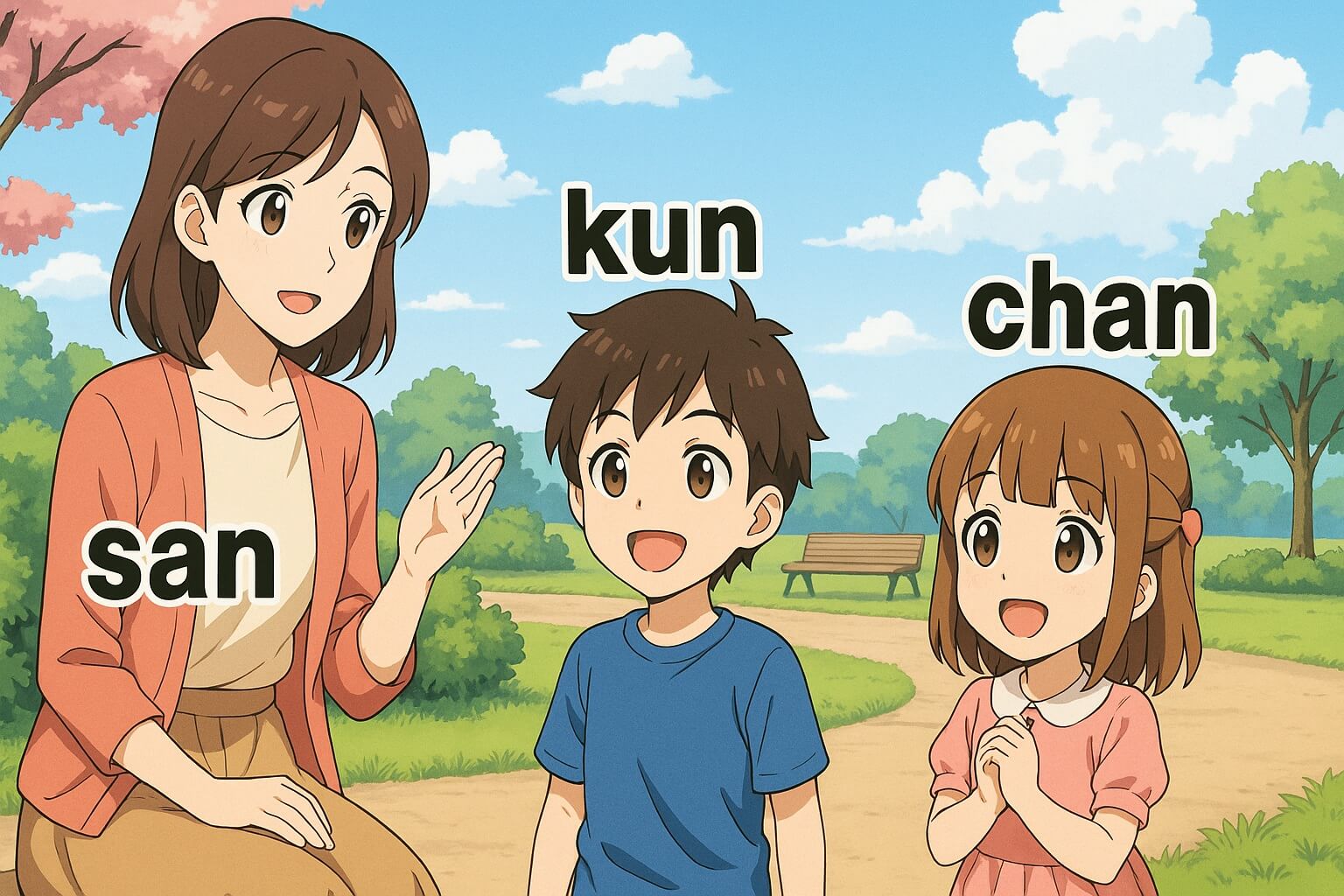
Understanding how people address each other in Japanese isn’t just about translation—it’s about culture, respect, and relationships. Honorifics like “san,” “kun,” and “chan” aren’t just optional additions. They’re built into daily communication and reflect how people see each other. If you’re learning Japanese or just interested in the culture, knowing when and why to use these honorifics is essential.
What Are Japanese Honorifics?
Honorifics are suffixes added to names that convey respect, familiarity, or affection. They’re used with first and last names depending on the situation. Removing them entirely, called yobisute, is rare and usually indicates an extremely close or intimate relationship—or can seem rude if done without mutual consent.
San (さん)
The Standard Honorific
- Who it’s for: Just about anyone.
- Tone: Polite and neutral.
- Use case: Coworkers, acquaintances, service staff, or anyone you don’t know well.
“San” is the most common Japanese honorific. You’ll hear it in almost every social and business context. If you’re not sure about which honorific to use, “san” is your safest choice.
Examples:
- Yamada-san (山田さん) – Mr./Ms. Yamada
- Tanaka-san (田中さん) – Mr./Ms. Tanaka
Kun (くん)
For Boys and Junior Males
- Who it’s for: Generally younger males or male peers.
- Tone: Friendly, informal, somewhat relaxed.
- Use case: Young male classmates, junior males in the workplace, close male friends. Also sometimes used by older women toward younger men in informal or brotherly situations.
“Kun” suggests casual rank—used by someone of equal or higher rank addressing a younger or junior male. Though predominantly male-oriented, occasionally “kun” is also used with female colleagues in formal settings to indicate equality, or by older individuals toward younger people in a friendly manner.
Examples:
- Daiki-kun (大輝くん) – Daiki (young boy)
- Sato-kun (佐藤くん) – Sato (junior male coworker)
Chan (ちゃん)
The Affectionate and Cute Honorific
- Who it’s for: Close friends, romantic partners, children, pets.
- Tone: Affectionate, cute, endearing.
- Use case: Close female friends, young children, babies, and pets. Also commonly used in romantic relationships.
“Chan” conveys sweetness and affection. It’s regularly used with kids and pets but also among close friends or romantic partners. Be careful—using “chan” casually with someone you don’t know well can come across as condescending or inappropriate.
Examples:
- Aiko-chan (愛子ちゃん) – Aiko (little girl or close friend)
- Momo-chan (ももちゃん) – Momo (child, girlfriend, or dog)
Important Tips
Never use honorifics to refer to yourself. That’s a serious faux pas—it sounds arrogant or childish. Dropping honorifics entirely (referring to someone by their name only) is typically reserved for family, couples, or extremely close friends.
Final Thoughts
By learning honorifics like san, kun, and chan, you’re gaining insight into Japanese society. These suffixes communicate how people view each other, their relationships, and their place within society. Next time you hear “Tanaka-san” or “Yuki-chan,” you’ll recognize that there’s more behind these terms than simple politeness.
When in doubt, start with “san,” listen carefully, and let the context guide you. Start with respect—everything else will fall into place.



